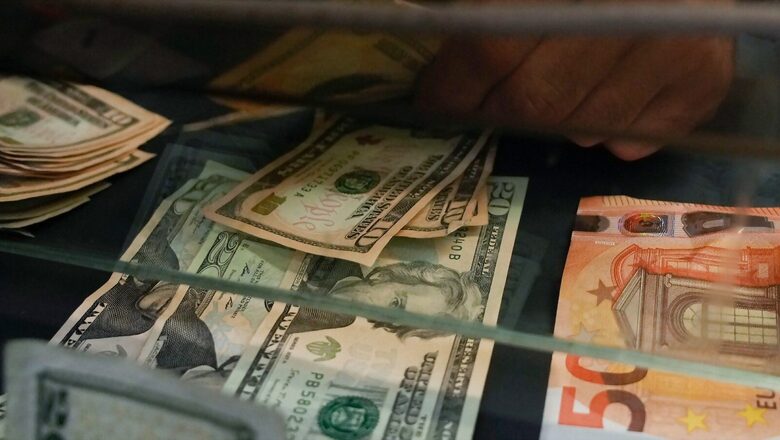
views
US Removes India From Currency Watch List: The US Department of Treasury has removed India from its Currency Monitoring List of major trading partners after the past two years. The list merits close attention to the countries’ currency practices and macroeconomic policies. Along with India, Italy, Mexico, Thailand and Vietnam have also been removed from the list.
In its biannual report to the US Congress, the country’s Department of Treasury said China, Japan, Korea, Germany, Malaysia, Singapore and Taiwan are the seven economies that are now part of the current monitoring list.
The countries that have been removed from the list have met only one out of three criteria for two consecutive reports, it said. Once on the Currency Monitoring List, an economy remains there for at least two consecutive reports.
In this report, the US treasury department reviewed and assessed the policies of major US trading partners, comprising roughly 80 per cent of US foreign trade in goods and services, during the four quarters through June 2022.
What Does It Mean For India?
When on the US’ Currency Monitoring List, a country is considered a ‘currency manipulator’. A currency manipulator is a designation applied by US government authorities to countries that engage in “unfair currency practices” for a trade advantage.
Vivek Iyer, partner and leader (financial services risk) at Grant Thornton Bharat, said, “This (the removal from US’ Currency Monitoring List) means that the Reserve Bank of India (RBI) can now take robust measures to manage the exchange rates effectively, without being tagged as a currency manipulator. This is a big win from a markets standpoint and also signifies the growing role of India in global growth.”
To manage exchange rates amid the rupee fall, the RBI recently took actions like buying dollars at the time of excess inflows and selling dollars at the time of outflows.
Anil Kumar Bhansali, head (treasury) at Finrex Treasury Advisors, said, “For India, it is good news as we were designated a currency manipulator. The rupee could appreciate on account of this.”
Currency Monitoring List: What Is This?
Putting a country under the Currency Monitoring List would mean that the country is artificially lowering the value of its currency to gain an unfair advantage over others. This is because the lower value of the currency will lead to a reduction of the export costs from that country.
The US Department of Treasury releases a semi-annual report in which it tracks global economic developments and reviews foreign exchange rates. It also reviews the currency practices of the US’ 20 biggest trading partners.
Currency Monitoring List: Three Criteria
There are there criteria based on which a country is put under the currency watch list. A country that meets two of the three criteria in the US’ Trade Facilitation and Trade Enforcement Act of 2015 is put under the Currency Monitoring List. In the latest report, Treasury has reviewed the 20 largest US trading partners against the thresholds Treasury has established for the three criteria in the 2015 Act:
1) A significant bilateral trade surplus with the United States is a goods and services trade surplus that is at least $15 billion.
2) A material current account surplus is one that is at least 3 per cent of GDP, or a surplus for which Treasury estimates there is a material current account “gap” using Treasury’s Global Exchange Rate Assessment Framework (GERAF).
3) Persistent, one-sided intervention occurs when net purchases of foreign currency are conducted repeatedly, in at least 8 out of 12 months, and these net purchases total at least 2 per cent of an economy’s GDP over a 12-month period.
Once a country meets the criteria, it is labeled as a ‘currency manipulator’ by the US Department of Treasury. Once on the Monitoring List, an economy will remain there for at least two consecutive reports “to help ensure that any improvement in performance versus the criteria is durable and is not due to temporary factors”.
Read all the Latest Business News here
















Comments
0 comment